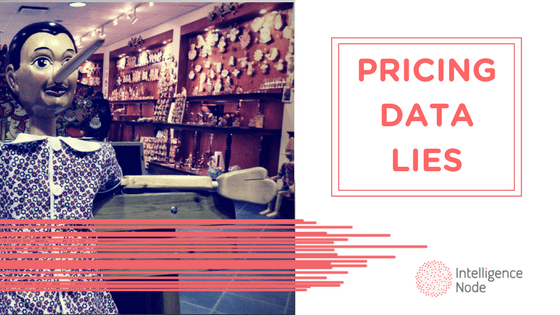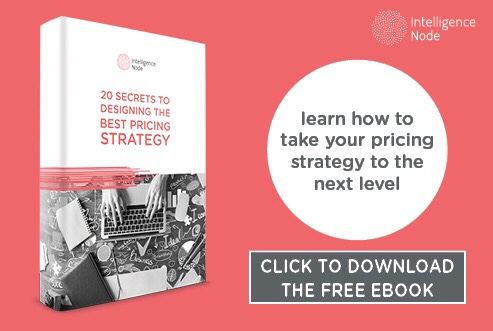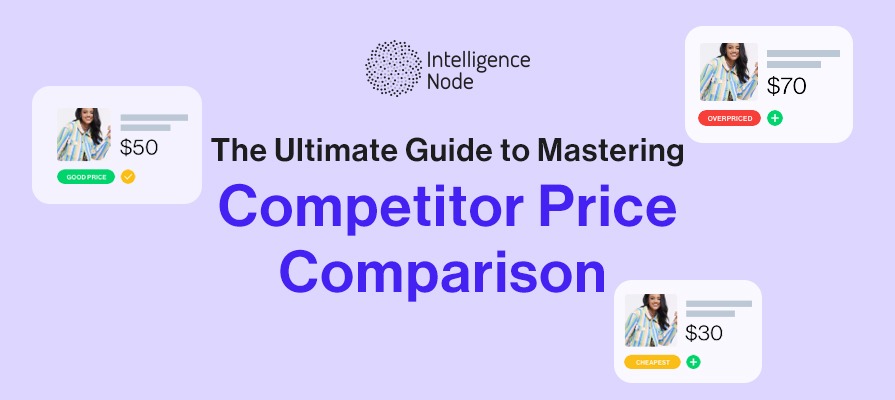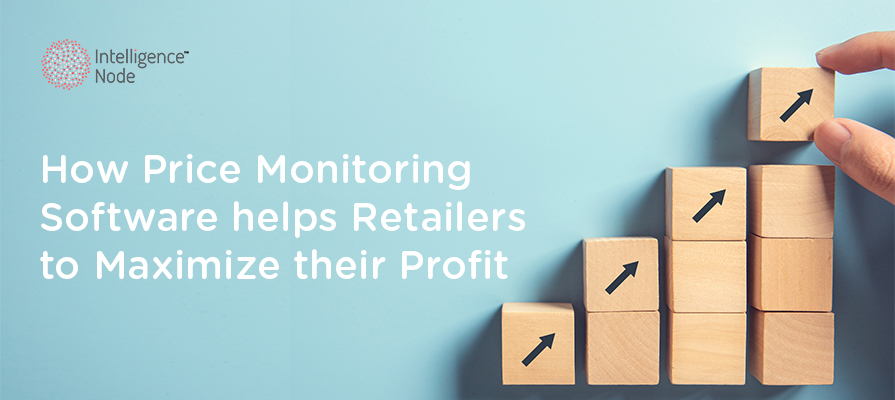It’s one thing for a lie to be a simple inaccuracy regarding a specific set of information. It’s a whole another story and a real problem when those lies become common practices. There are some instances where lies and myths about pricing data become a part of company’s culture, so deeply integrated with their business strategy that it hampers any kind of progress regarding optimal pricing.
Given the overall complexity and volume of pricing data, there are many things that constitute a successful evaluation of price optimization. In this post, we’ll explore the top lies and misconceptions that are more often than not associated with pricing data. Hopefully, this will give you a better understanding and help you make more informed decisions, as well as what you can expect in terms of optimized pricing and improved profitability.
The lie: “The market alone dictates the prices”
The truth: While it is true that the market has a direct influence on price ranges, it’s a lie that it alone sets the final price. Pricing managers, accompanying the business’ pricing policy and strategy, have the means and the opportunity to differentiate their products and services and create value for them. Market price doesn’t necessarily mean you have to accommodate to it, rather you need to accommodate your price to your customers. MIT Sloan performed a research a couple of years ago and stated that “pricing power is not destiny, but a learned behavior”, meaning pricing is almost always based on knowledgeable insights, even though competition, costs and price sensitivity within a market have a significant effect.
The lie: “We are in a commodity business”
As a prime example of when a lie or misconception takes a wrong turn, having a firm belief that a company is a commodity business leads to unconditional acceptance of the prevailing prices in the market. Companies needlessly label themselves as price takers, believing higher prices will cause customers to flee. This unnecessary pigeonholing clouds the range of factors that customers actually care about and that justify having premium prices.
The truth: This lie, often named “commodity mindset”, manifests in a shifting strategy that uses competitive price cuts to retain profitability as the prevailing thought is it’s better to sell at discount prices than not at all. Yet, this behavior is slowly lowering profit margin to a minimum and actually harming the business by lowering prices too much or too often. It also means trouble in the long run as your customers expect lower prices each time, all the while the issue of a price increase is practically inconceivable. Instead, focus on the unique selling points of your product, together with the complete service that goes into the process (customer service, delivery, durability, ease of use, etc.) and build your price on that. This ultimately provides incremental value to your product and avoids potential restrictions.
The lie: “Price changes are too difficult to measure accurately”
The truth: Tracking all the changes in prices, customer behavior, production cost, and sales volume can be an intimidating task, but far from being too difficult or impossible. It’s a part of the process to stay up to date with all the changes in the business environment and all its facets. It takes some time to reach a level of analytical awareness that can produce accurate calculations in order to set optimal pricing. It’s a time-consuming process that can also be very expensive. A possible way to overcome this and optimize profit margins at a product level is to use a price intelligence software with analytical tools.
The lie: “Every customer is price sensitive”
The truth: The majority of markets have customers whose primary and only concern is the price, but they are not the only type nor the prevailing one in some cases. There are customers who look beyond the price tag and value additional service attributes that, as a whole, form a selling package. This is roughly the same set of parameters we discussed just a few lines before – customer support, delivery options, ease of use and so on. The key here is to recognize through market segmentation which customers, under which situations (also an important factor), care for the overall package and not just the price. That way, you can build your business around that focus group and price them accordingly. This brings us to the next popular lie…
The lie:“Customers deflect with increased pricing”
The truth: As evidenced above, this is not necessarily true. Of course, we are not talking about mindless spiking of prices in order to boost profit margin. That won’t go. When a business adds new features or enhances existing characteristics to your product, it has every right to set higher prices and ask for more money from its customers because its product now has more value.
It is true that you may lose a few customers here and there, it’s the nature of the business. However, apart from that niche group of customers that care about more than just the price, there are also customers who will listen and understand your reasoning if you present it up-front. Robert Cialdini, author of the book Influence, demonstrates the importance of explaining your actions. Without an explanation for your price increase, your customers will create their own and pull away from the brand. However, if you put an effort to explain why, they will accept the increase easier and will ultimately become the loyal customers who truly understand and value what you offer. For instance, Procter & Gamble was re-launching the Olay brand by testing three prices:
- $12.99 – sales were good, affordable product to the mass market);
- $15.99 – sales tanked, not expensive enough to be considered a premium cosmetic for the mass market, too cheap for the prestige shopper to consider it a quality product);
- $18.99 – sales were great, good value (credible and not too cheap or expensive for both categories
In the end, the company picked the third price of $18.99 and it became a $2.4 billion dollar business with double digit growth and great margins.
The lie: “Having the highest-priced products in the market won’t sell”
The truth: This lie often comes from the buyers themselves who, naturally, look out for their best interest by trying to score the best bargain. They have a good reason to complain about your prices but you should also have a good reason for those prices. Justify your prices by rationalizing how your products and services contrast from the rest and place accent on how your goods deliver value. Once you do that and the customers realize it, you’ll start to create a base of loyal customers who will repeatedly come back.

“People don’t buy what you do, they buy why you do it”. Take Apple as an example. The company has had a rough history in the 90’s but has managed to become one of the tech leaders today. How? 1. by delivering a top-notch product and 2. By creating an entire culture around their brand. They sell some of the most expensive devices but people still buy them, even if it would be more cost-effective to hold onto the older model. The focus should be on selling on value, not on price in order for customers to pay more here than less elsewhere.
Conclusion
As most managers know, it takes a number of factors to accurately gauge correct pricing. In doing so, it helps to strive for product and service differentiation by accounting value all-around for your customers, be it through price alone, on-time delivery, better customer service or something else.
However, there’s a number of misleading assumptions and outright lies that can affect entire pricing structure. This is where your research comes into play. A business should always make decisions based on actionable insights within its own sales data, as well as the competition’s. Proper business analysis can quickly pinpoint the areas where you can improve your profit margin and eliminate the uncertainty and unproven principles that many take for granted. As evidenced in the examples we’ve mentioned above, strategic thinking directly impacts the company’s bottom line. Once you form a pricing policy and strategy, it doesn’t take much to update the data and stay on top of it. Put your margins in the first place and create value for your products without succumbing to the lies, myths a, d misconceptions.
If you found this useful and you’d like to learn how to take your pricing strategy to the next level, we invite you to download our free 20 secrets to designing the best pricing strategy eBook. Click below to take advantage of this opportunity.






